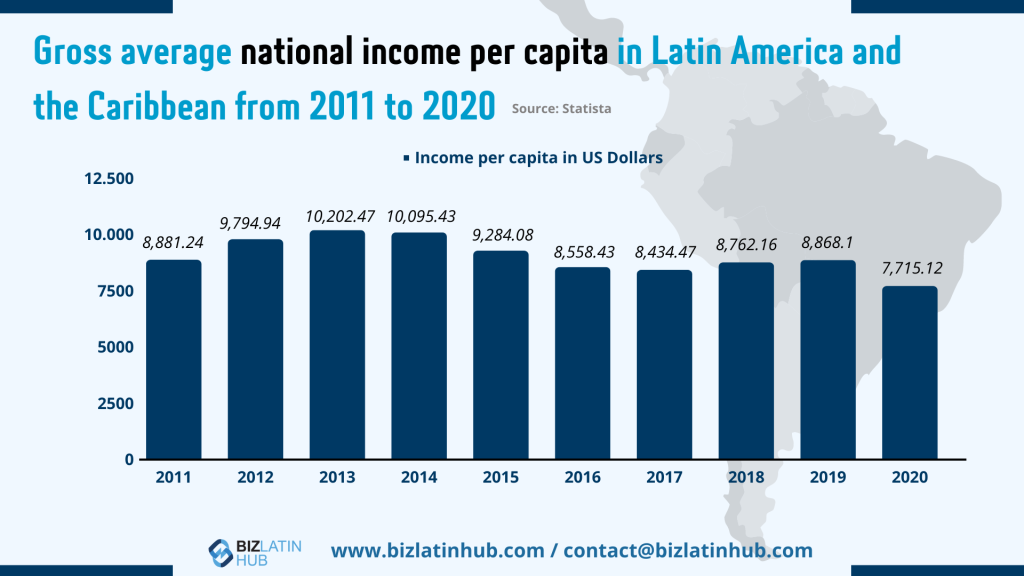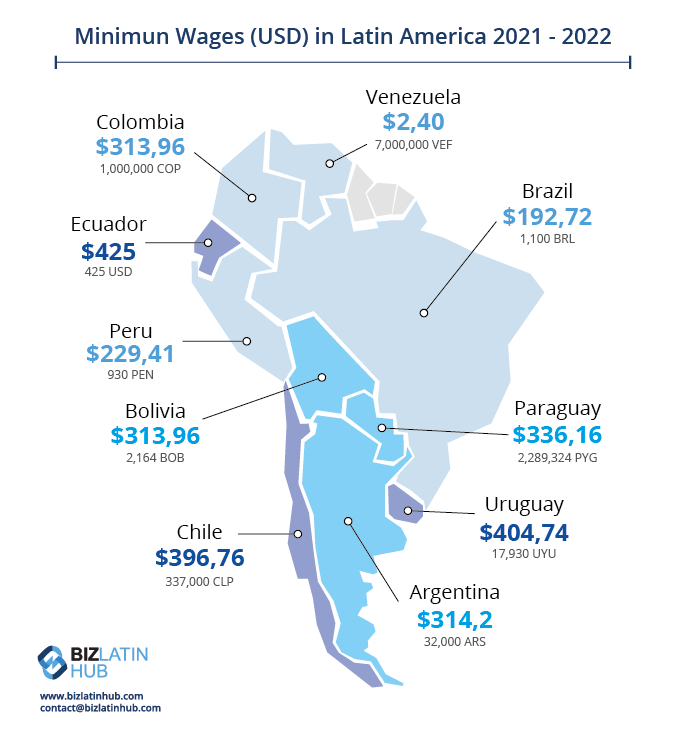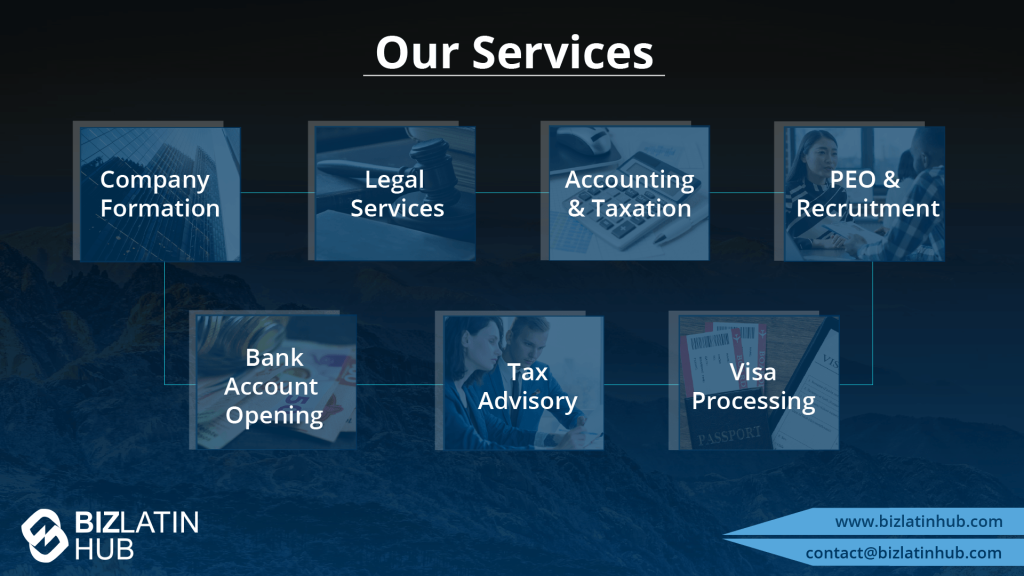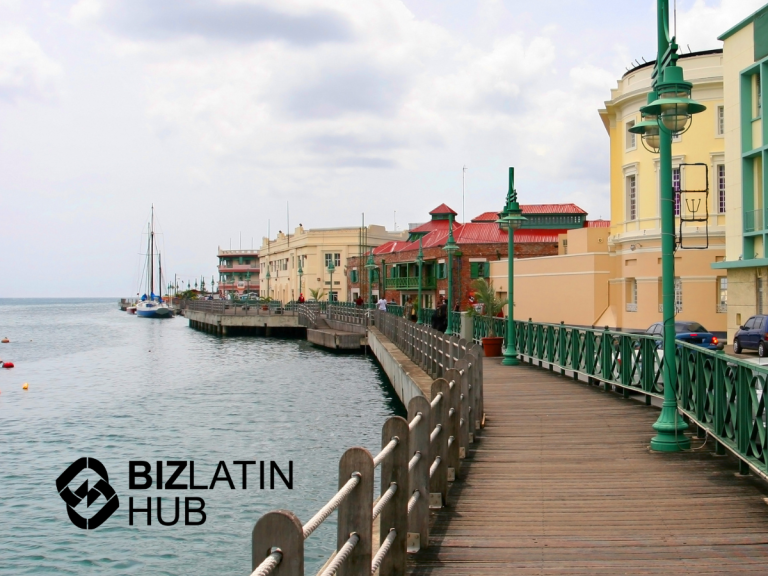For the last couple of years, a single term has taken center stage in global economic updates: inflation. The phenomenon and its ongoing impacts have significantly affected the region. Inflation in Latin America is both an economic worry and a shadow of the past, as many countries have suffered historic bouts of hyperinflation.
Although Venezuela and Argentina have gained notoriety for their prolonged struggle with elevated inflation rates, other countries have also found themselves grappling with the challenge of mounting inflation in Latin America. Although it will pass, it is problematic in the short term.
Despite ongoing inflation in Latin America, it is still attractive to foreign businesses persists due to its rich natural resources, emerging consumer markets, and growth potential. Company formation remains of great interest to many outside investors, with the chance of big returns. Biz Latin Hub can help you with this, no matter where, due to our 18 dedicated local offices across Latin America and the Caribbean.

What is the outlook for inflation in Latin America?
Latin America and the Caribbean are doing well despite challenges like the pandemic, Russia’s actions in Ukraine, and higher US interest rates. In 2022, the economy grew by 3.9% and the region’s economy is now bigger than before the pandemic.
As a result, the region is stronger due to better economic planning, improved banking control, and more savings. Since the 1980s debt crisis, many Latin American countries started using flexible exchange rates, which helps their money absorb shocks and gives them more control over money policies.
They also made spending rules and gave more power to their central banks. These changes let them raise interest rates quickly when prices increased, as seen in 2021.
LATAM’s economy grew by 2% in 2023 and just 1.6% is predicted in 2024 – a slower rate than other developing regions. The slowdown is happening because of problems outside the region, especially in important trading partners like the US and China. In the US, prices are rising, and the US government is making it harder to get money.
Latin America’s economy is unlikely to grow at its pre-pandemic rate of around 2.5% per year, due to reduced spending by wealthier countries and decreased production in China.
Inflation update in LATAM – Autumn 2024
Below are the latest inflation rates of Latin American countries as of September 2024.
- Argentina – 237%
- Brazil – 4.24%
- Chile – 4.7%
- Colombia – 6.12%
- Mexico – 4.99%
- Peru – 2.03%
- Bolivia -5.19 %
- Panama – 0.34%
- Uruguay – 5.57%
- Costa Rica – %
- Ecuador – 1.28%
- Paraguay – 4.2%
- Puerto Rico – 1.5%
- Venezuela – 35.5%
How is inflation affecting Latin America?
Inflation has already peaked in many Latin American economies, but it remains elevated. Colombia is the last country to see a decrease in inflation since March, although it has the highest rate among the major economies (11.7% in July).
Lower food and energy prices have supported slowing inflation, but core inflation remains steady in most countries. Argentina stands out with exceptionally high price increases (7.8% month on month in May), and Costa Rica experienced a significant drop in inflation. Uncertainty persists regarding the speed of inflation reduction due to factors like labor markets, wage pressures, and policy changes.
Despite easing inflation, expectations for 2023 and 2024 remain above targets in many countries. The US Fed temporarily halted interest rate increases, but further hikes are projected. While US inflation decreased from its peak, it remains higher than the target. Latin American central banks are likely to follow their monetary paths due to ongoing disinflation.

What the inflation update in LATAM means for business
The ongoing economic slowdown in Latin America affects the retail and online shopping industry, prompting companies to rethink their strategies to address these new challenges. The reduced growth stems from high inflation rates, decreased consumer spending, and economic and political instability.
Brazil leads the e-commerce market, trailed by Mexico and Argentina, yet traditional retail remains dominant, with e-commerce representing only 9.8% of total retail sales in Brazil, compared to 21.3% in the US.
The economic slowdown in Latin America is led by uncertainty in the global economy and elevated interest rates. This will impact consumer spending and jobs, alongside political instability in key economies like Colombia, Peru, and Argentina.
This overall situation will decrease investor confidence and hinder economic growth. Additionally, regional retail and online businesses face costly logistics, inadequate infrastructure, and regulatory issues.
Biz Latin Hub can help you understand inflation in Latin America
At Biz Latin Hub, we have a team of specialists who can provide you with customized services to meet your business needs in Latin America.
Our comprehensive range of legal, accounting, and back-office solutions enable us to serve as your primary contact point, helping simplify and accelerate your entry into the LATAM market.
Receive the latest inflation update in LATAM from our team of local experts, get insights into company formation, and learn how to find the top talent in the region.
If you found this inflation update in LATAM article interesting, be sure to explore the rest of our coverage of the region. Additionally, you can learn more about our team and expert authors here.






